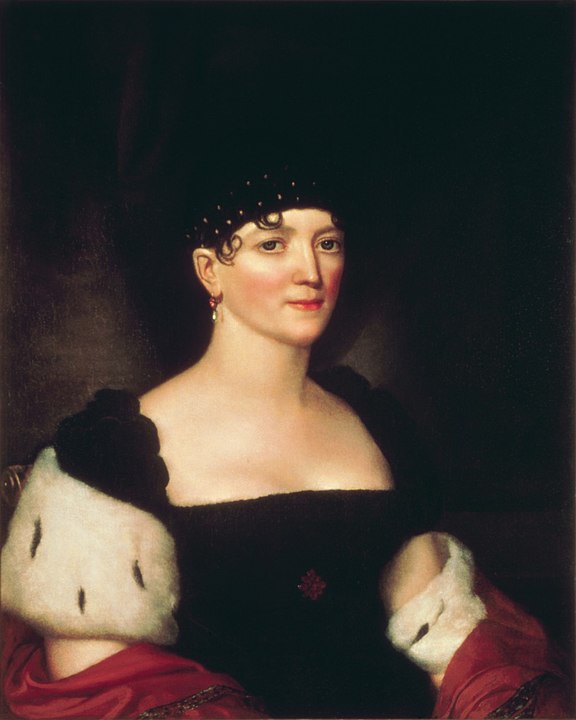
Elizabeth Monroe, the wife of James Monroe, served as First Lady of the United States from 1817 to 1825. During her tenure, she modeled the White House after a European Court, seeking to raise the stature of the country in the eyes of its allies across the Atlantic.
Early Life
Elizabeth Kortright Monroe was born on June 30, 1768, in New York City, New York. Her family was wealthy, although her Loyalist father lost most of his fortune in the Revolutionary War. In 1786, James Monroe wrote to his friend Thomas Jefferson that he had married the daughter of a gentleman, “injured in his fortunes” by the Revolution.
Elizabeth married James Monroe in February of 1786, at the age of 17. They had two daughters and a son who died in infancy.
Wife of a Politician
Elizabeth Monroe travelled with her husband as he pursued his political ambitions. In 1794, President George Washington appointed James United States Minister to France, and the couple moved to Paris in the midst of the French Revolution. Elizabeth Monroe became beloved among the French after her courageous visit to Adrienne de Noiolles de Lafayette, the imprisoned wife of the Revolutionary War hero Marquis de Lafayette. Lafayette was facing death on the guillotine, when Elizabeth Monroe visited her in prison, sending an “unofficial” message that the United States supported her release. Lafayette was freed, and Elizabeth became known as “la belle americaine.”
The Monroes returned to the United States in 1797. Elizabeth lived in Richmond while her James served as governor of Virginia. The couple returned to Europe three years later when James was appointed Foreign Minister to France and Britain. The couple moved to Washington, D.C. in 1811, when James was appointed President James Madison’s secretary of state.
First Lady of the United States
James Monroe was elected President of the United States in 1816. As First Lady, Elizabeth Monroe changed the customs established by her predecessor Dolley Madison. Her social style reflected the formal atmosphere of European courts.
Due to her fragile health, Elizabeth Monroe discontinued the practice of making social calls on the wives of diplomats and other dignitaries. However, because Elizabeth and James did not publicly disclose her health issues, which were likely due to a form of epilepsy, many interpreted her aloof.
Later Life
Just one year after her husband’s presidency ended, Elizabeth Monroe suffered a seizure and fell into open fireplace, resulting in severe burns. She died three years later on September 23, 1830. Following her death, James Monroe reportedly burned the letters they had exchanges throughout the marriage.








